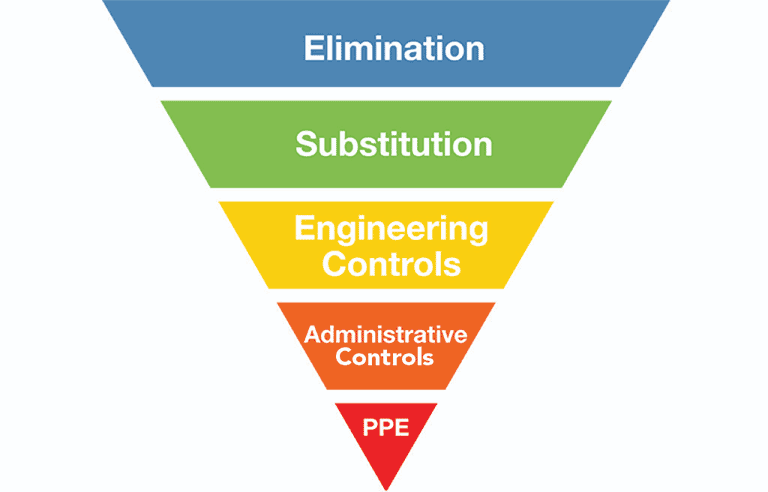Video: Use the Hierarchy of Controls to protect workers from heat

Iowa City, IA — Safety pros can make and manage an effective heat-related illness prevention program by implementing the Hierarchy of Controls, Iowa OSHA Bureau Chief Peggy Peterson says in a new video.
In the video – produced by the Healthier Workforce Center of the Midwest at the University of Iowa – Peterson explains how employers can apply the framework to identify more effective strategies to protect workers from excessive heat. “The Hierarchy of Controls represent to that employer what they need to do to reduce, eliminate or control a hazard,” she says.
Peterson touches on all five categories of the Hierarchy of Controls – elimination, substitution, engineering controls, administrative controls and personal protective equipment – and provides examples of each. For instance, an effective administrative control is having new and returning workers acclimatize to high heat conditions.
“It’s so critical to have that acclimation time,” says Peterson, who notes that OSHA encourages employers to have workers expend 20% of their exertion on the first day of a job in high heat conditions. “The next day we’re going to do 40%, then we’re going to do 60%, 80%. By the end of that week, we’ll do 100% of our work in that hot environment.”
Peterson adds that when implementing the Hierarchy of Controls, don’t simply focus on one level and say, ‘That’s it. Once we’ve done that, we’re good. Those controls work together as well.”
Post a comment to this article
Safety+Health welcomes comments that promote respectful dialogue. Please stay on topic. Comments that contain personal attacks, profanity or abusive language – or those aggressively promoting products or services – will be removed. We reserve the right to determine which comments violate our comment policy. (Anonymous comments are welcome; merely skip the “name” field in the comment box. An email address is required but will not be included with your comment.)

